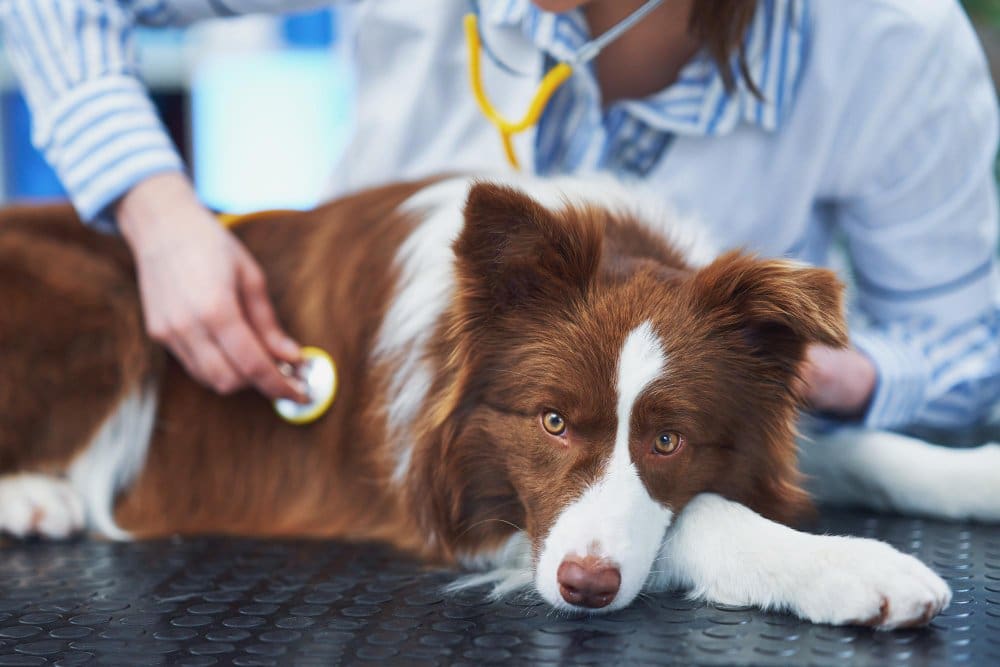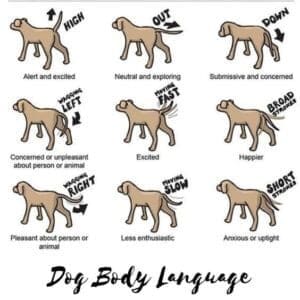Are you a new dog owner? Do you want to ensure that your furry friend lives a long, healthy, and happy life? Look no further! “The Beginner’s Guide to Dog Health & Wellness” is here to provide you with all the essential information you need to keep your beloved pet in tip-top shape. Whether you’re seeking advice on nutrition, exercise, grooming, or preventive care, this ultimate guide has got you covered. From deciphering dog food labels to creating a foolproof exercise routine, this comprehensive resource will help you navigate the world of dog health and wellness with ease. So, get ready to embark on a journey of becoming a responsible and well-informed dog owner who understands the importance of maintaining a balanced and nurturing lifestyle for your canine companion.
Understanding Basic Dog Health Needs
Recognizing Signs of a Healthy Dog
When it comes to keeping your furry friend in good health, it’s important to be able to recognize the signs of a healthy dog. A healthy dog will have a shiny coat, clear eyes, and a wet nose. They will have a good appetite and maintain a healthy weight. Their energy levels will be normal, and they should be alert and interested in their surroundings. Regular exercise and a balanced diet contribute to their overall health as well.
Common Health Issues in Dogs
Just like humans, dogs can experience various health issues throughout their lives. Some common health issues in dogs include allergies, dental problems, ear infections, and arthritis. Dogs can also suffer from digestive issues, skin problems, and respiratory conditions. It’s important to be aware of these common health issues so that you can monitor your dog’s well-being and seek veterinary attention when necessary.
The Importance of Regular Veterinary Check-ups
Regular veterinary check-ups are a crucial aspect of maintaining your dog’s overall health. During these check-ups, your vet will perform a thorough examination of your dog, checking for any signs of illness or potential health issues. They will also administer necessary vaccinations and preventive treatments to protect your dog from common diseases. These check-ups allow your vet to catch any health problems early on and provide appropriate treatment.
Vaccinations and Preventive Care
Vaccinations and preventive care are essential for your dog’s well-being. Vaccinations help protect your dog from serious and potentially life-threatening diseases such as rabies, parvo, and distemper. Preventive treatments, such as flea and tick prevention, heartworm prevention, and regular deworming, help keep your dog healthy and free from parasites. Consult with your vet to create a tailored vaccination and preventive care plan for your dog based on their individual needs.
The Role of Nutrition in Dog Health
Feeding a Balanced Diet
Proper nutrition plays a crucial role in supporting your dog’s overall health. A balanced diet should consist of high-quality protein, healthy fats, carbohydrates, and essential vitamins and minerals. Commercially available dog food is designed to meet the nutritional needs of dogs, and it’s important to choose a reputable brand that provides complete and balanced meals.
Choosing the Right Dog Food
When choosing dog food, consider factors such as your dog’s age, breed, size, and any specific dietary requirements they may have. Consult with your vet to determine the best type of dog food for your furry friend. It’s worth noting that some dogs may require special diets due to allergies, sensitivities, or medical conditions. Always read the label and ensure that the ingredients are appropriate for your dog’s needs.
Common Dietary Issues in Dogs
Some dogs may experience dietary issues such as food allergies or sensitivities. These can manifest through symptoms like itching, gastrointestinal upset, or skin problems. If you suspect that your dog has a dietary issue, it’s crucial to seek veterinary advice to identify and address any underlying allergies or sensitivities. Your vet may recommend an elimination diet or suggest a specific diet tailored to your dog’s needs.
Understanding Nutritional Requirements
Each dog has unique nutritional requirements based on factors such as age, breed, activity level, and overall health. Puppies require a diet rich in nutrients to support their growth and development, while senior dogs may have specific dietary needs to address common health issues associated with aging. Working with your vet to understand your dog’s nutritional requirements ensures that they receive the necessary nutrients to stay healthy throughout their lives.
Exercise and Physical Fitness
Benefits of Exercise for Dogs
Regular exercise is essential for your dog’s physical and mental well-being. Exercise helps maintain a healthy weight, strengthens muscles and joints, and improves cardiovascular health. Additionally, exercise provides mental stimulation, reduces behavioral problems, and promotes a sense of happiness and calmness in dogs. Engaging in regular exercise with your furry friend is not only beneficial for them but also strengthens the bond between you.
Determining the Right Exercise Routine
The appropriate exercise routine for your dog will depend on factors such as their breed, age, and energy level. Some dogs, such as high-energy breeds or working breeds, require more vigorous exercise, while others may prefer shorter and less intense activities. It’s important to strike a balance between physical exercise and mental stimulation to keep your dog happy and healthy. Consult with your vet to determine the suitable exercise routine for your dog.
Physical Activity for Different Dog Breeds
Different dog breeds have different exercise needs and preferences. For instance, high-energy breeds like Border Collies or Labrador Retrievers may thrive with activities such as long walks, runs, or playing fetch. On the other hand, smaller and more toy-like breeds like Chihuahuas may benefit from shorter walks, interactive play sessions, or puzzle toys. Understanding your dog’s breed-specific exercise requirements can help you provide them with appropriate physical activities.
Mental Stimulation and Enrichment
The Importance of Mental Stimulation
While physical exercise is important, mental stimulation is equally vital for your dog’s well-being. Dogs are intelligent animals that thrive on mental challenges and problem-solving. Mental stimulation helps prevent boredom, reduces behavioral issues such as chewing or excessive barking, and enhances their overall cognitive abilities. Providing regular mental exercise keeps your dog engaged, happy, and mentally sharp.
Engaging Activities for Dogs
There are various engaging activities that can provide mental stimulation for your dog. Puzzle toys, treat-dispensing toys, and interactive feeding games encourage problem-solving and keep your dog mentally active. Training sessions that incorporate obedience commands or new tricks challenge their minds and strengthen the bond between you and your furry friend. Additionally, introducing new environments, smells, and sounds during walks or outdoor outings can stimulate their senses and provide mental enrichment.
Training and Behavioral Challenges
Training is an essential aspect of mental stimulation for dogs. Basic obedience training not only teaches your dog useful commands but also stimulates their minds and improves their focus and impulse control. Training sessions should be positive and reward-based, using treats or praise to reinforce good behavior. If your dog exhibits any behavioral challenges, such as leash pulling or separation anxiety, consulting a professional dog trainer can help address and overcome these challenges.
Proper Grooming Practices
Regular Bathing and Brushing
Regular grooming is essential for your dog’s hygiene and overall health. Bathing your dog regularly helps keep their coat clean and free of dirt and debris. The frequency of bathing depends on your dog’s breed and coat type, but generally, a bath every 4-8 weeks is recommended. Regular brushing helps remove loose hair, prevents matting, and stimulates healthy skin and coat. Consult with your vet or a professional groomer for guidance on the appropriate grooming routine for your dog.
Nail Trimming and Dental Care
Nail trimming and dental care are crucial aspects of your dog’s grooming routine. Overgrown nails can cause discomfort, affect your dog’s posture and movement, and even lead to injuries. Regular nail trims, typically once every 1-2 months, help maintain optimal nail length. Furthermore, dental care is essential to prevent dental diseases, such as gum inflammation and tooth decay. Brushing your dog’s teeth regularly and providing dental chews or toys can help keep their teeth and gums healthy.
Addressing Skin and Coat Issues
Some dogs may experience skin and coat issues, such as dryness, itching, or flakiness. These issues can be caused by allergies, parasites, nutritional deficiencies, or underlying health conditions. Regular grooming allows you to closely inspect your dog’s skin and coat, providing an opportunity to identify any abnormalities or signs of discomfort. If you notice any issues, consult with your vet for proper diagnosis and treatment recommendations.
Grooming Supplies and Tools
Having the right grooming supplies and tools is important for maintaining your dog’s grooming routine. Essential grooming supplies include dog-specific shampoos and conditioners, a brush or comb suitable for your dog’s coat type, nail clippers or grinders, and ear cleaning solutions. Additionally, consider investing in specific grooming tools based on your dog’s breed, such as de-shedding tools for heavy-shedding breeds or specific brushes for curly-coated breeds. Professional groomers can also provide guidance on suitable grooming supplies for your furry friend.
Maintaining a Clean and Safe Environment
Indoor and Outdoor Safety Measures
Creating a safe environment for your dog is crucial to their well-being. Indoors, make sure to pet-proof your home by removing any hazardous substances, securing cords and cables, and blocking off access to areas with potential dangers. Outdoors, ensure that your yard is securely fenced to prevent your dog from wandering off or encountering dangerous situations. Regularly inspect your yard to remove any toxic plants, sharp objects, or potential hazards that could harm your dog.
Recognizing and Managing Household Hazards
There are several household hazards that can pose a risk to your dog’s health. Common household hazards include toxic foods (e.g., chocolate, grapes, onions), cleaning products, medications, and household plants. It’s important to keep these items out of your dog’s reach and store them in secure, inaccessible areas. Additionally, certain common household items, such as small toys or strings, can present choking hazards, so be mindful of your dog’s access to these potential dangers.
Preventing Fleas, Ticks, and Parasites
Fleas, ticks, and parasites can cause discomfort and transmit diseases to your dog. Preventive measures such as regular flea and tick treatments, as well as regular deworming, are crucial for keeping your dog parasite-free. Consult with your vet to determine the appropriate preventive measures and treatment options for your dog. Additionally, thoroughly check your dog for fleas, ticks, or any signs of parasites after outdoor activities, and promptly remove any parasites you find.
Coping with Stress and Anxiety
Recognizing Signs of Stress in Dogs
Dogs, like humans, can experience stress and anxiety. It’s important to be able to recognize the signs of stress in your dog so that you can provide appropriate support. Signs of stress in dogs can include excessive barking or whining, restlessness, panting, trembling, loss of appetite, or destructive behavior. If you notice these signs, try to identify and address the source of stress and provide a calming environment for your dog.
Creating a Calm and Relaxing Environment
Creating a calm and relaxing environment is beneficial for dogs experiencing stress or anxiety. Provide a designated quiet space for your dog where they can retreat and feel safe. This can be a crate, a cozy bed, or a specific room where they can relax undisturbed. Additionally, consider the use of calming aids such as pheromone diffusers or anxiety-reducing supplements, but always consult with your vet before introducing any new products.
Managing Anxiety through Training and Therapeutic Techniques
Training and therapeutic techniques can be effective in managing your dog’s anxiety. Positive reinforcement training can help build your dog’s confidence and teach them how to cope with stressful situations. Additionally, techniques such as desensitization and counter-conditioning can gradually expose your dog to anxiety-inducing triggers in a controlled and positive manner, helping them overcome their fears. Consult with a professional dog trainer or a veterinary behaviorist for guidance on managing anxiety in your dog.
Socialization and Interaction
Benefits of Proper Socialization
Proper socialization is crucial for your dog’s well-being and their ability to interact with humans and other animals. Early socialization helps prevent behavioral issues and ensures that your dog feels comfortable and confident in various situations. Socialized dogs are more likely to develop positive relationships with people and other dogs, and they tend to be more adaptable and resilient in new environments.
Introducing Dogs to New Environments and Situations
When introducing your dog to new environments or situations, it’s important to take it slowly and provide positive experiences. Whether it’s a new park, a veterinary clinic, or encountering other dogs, gradual exposure and positive reinforcement can help your dog feel more comfortable and reduce anxiety. Reward your dog with treats or praise for calm and appropriate behavior, and always prioritize their safety and well-being during socialization experiences.
Understanding Dog Body Language
Understanding dog body language is essential for successful interactions and ensuring your dog’s safety. Dogs communicate through their body posture, facial expressions, and vocalizations. Being able to read their body language can help you identify signs of fear, aggression, or discomfort, giving you the opportunity to intervene and prevent potential conflicts. Educate yourself on common dog body language cues and consult with professionals if you have any concerns about your dog’s behavior.
Dealing with Aggression and Fear
Aggression and fear in dogs can be challenging to address, and professional guidance is often necessary. If your dog displays aggressive behavior or exhibits fear-based reactions, it’s important to consult with a professional dog trainer or veterinary behaviorist. They can assess the underlying causes of the behavior and provide appropriate strategies to manage and modify your dog’s response. Remember to prioritize the safety of yourself, your dog, and others when dealing with aggression or fear-related issues.
Aging and Senior Care
Common Health Issues in Aging Dogs
As dogs age, they are more prone to certain health issues and may require specialized care. Common health issues in aging dogs can include arthritis, dental problems, vision or hearing loss, cognitive decline, and various age-related diseases. Regular veterinary check-ups and monitoring your dog’s condition are crucial for managing these age-related health concerns effectively.
Recognizing Signs of Aging
It’s essential to be able to recognize the signs of aging in your dog so that you can provide appropriate care and support. Signs of aging may include reduced mobility, stiffness or lameness, changes in appetite or weight, changes in behavior or sleep patterns, and decreased sensory abilities. If you notice any of these signs, consult with your vet to develop a tailored plan to support your senior dog’s specific needs.
Providing Specialized Care for Senior Dogs
Senior dogs require specialized care to ensure their comfort and well-being. This can include providing a balanced diet formulated for senior dogs, providing joint supplements to support mobility, and adjusting their exercise routine to accommodate any mobility limitations. It’s also important to monitor their cognitive function and provide mental stimulation to help keep their minds active. Regular check-ups and communication with your vet are invaluable when it comes to providing the best possible care for your senior dog.
Emergency Preparedness for Dog Owners
Creating an Emergency Kit
Being prepared for emergencies is crucial for the safety and well-being of your dog. Create an emergency kit that includes essentials such as a first aid kit, your dog’s medical records, a supply of medications, food and water, leash and collar, and extra identification tags. It’s also important to have emergency contact numbers for your veterinarian and local animal hospitals readily available. Regularly check and update your emergency kit to ensure that everything is in good condition and up to date.
Addressing Common Dog Emergencies
There are several common dog emergencies that may require immediate attention. These can include injuries, choking, poisoning, or heatstroke. Knowing how to respond to these emergencies can make a difference in the outcome for your dog. It’s important to familiarize yourself with basic first aid techniques for dogs and understand when it’s necessary to seek immediate veterinary help. Keep calm and focused during emergencies, and always prioritize your dog’s safety and well-being.
Knowing When and How to Seek Veterinary Help
Seeking veterinary help in a timely manner is crucial when your dog is injured or unwell. It’s important to be able to recognize when your dog needs veterinary attention. Signs that warrant a visit to the vet include persistent vomiting or diarrhea, difficulty breathing, sudden changes in behavior or appetite, seizures, or severe injuries. When in doubt, always contact your veterinarian for guidance on the best course of action. Remember, you know your dog best, so trust your instincts and advocate for their health.



